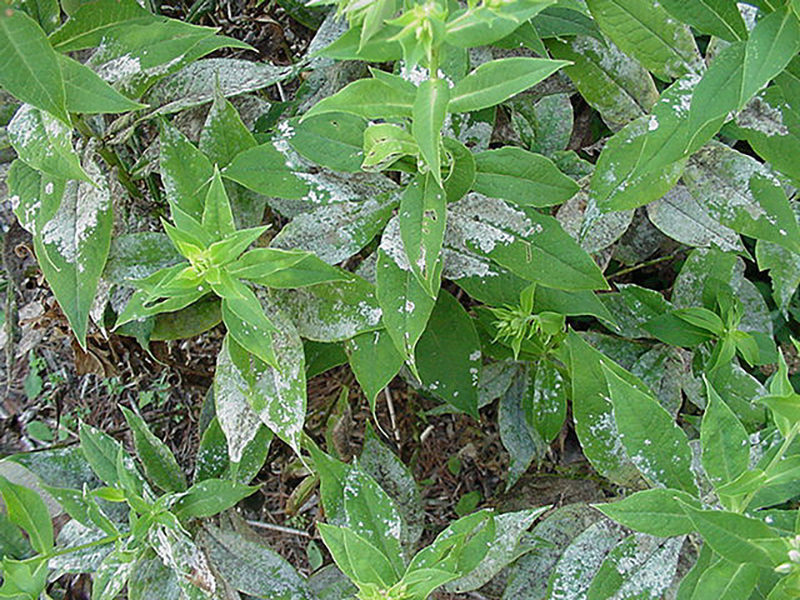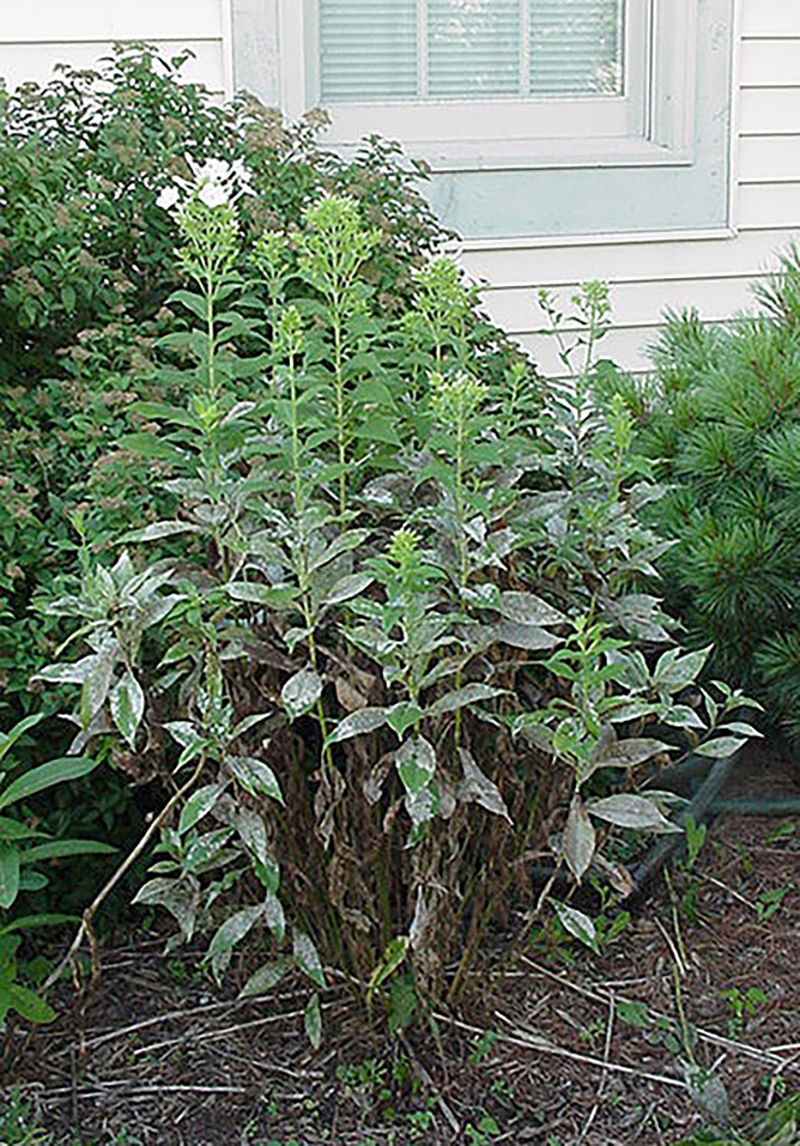Picture of the week
June 26, 2023
Garden Phlox
Tom Creswell, Director, Plant and Pest Diagnostic Laboratory, Purdue University
Garden phlox (Phlox paniculata) is often severely affected by powdery mildew. The white, powdery patches typical of the disease (Figure 1) can be seen now on susceptible phlox cultivars. The disease occurs first on the lower leaves, and appears to "move up" the plant as spores from the initial infections cause disease on younger leaves (Figure 2). In severe cases, virtually all of the foliage can be infected. Plant breeders have developed several garden phlox cultivars that have some resistance to powdery mildew. Many varieties of Phlox are listed as being resistant to powdery mildew but resistance levels vary and the amount of disease may also vary from year to year depending on environmental conditions. The Chicago Botanic Garden has published a detailed evaluation of Phlox varieties, including evaluation of powdery mildew resistance along with plant growth characteristics and spider mite tolerance.
click image to enlarge
Remember that resistance does not mean the plants will not become infected at all, but symptoms are less apparent and the disease will spread more slowly in resistant plants when compared to susceptible ones. When environmental conditions are favorable for disease development (warm temperatures, high humidity, poor air circulation between plants), powdery mildew can spread very quickly. Protectant fungicides may be necessary to keep the disease in check on susceptible plants. Refer to Purdue University Cooperative Extension publication BP-5-W, Powdery Mildew of Ornamentals, for more information on managing powdery mildew.
Keep up with current landscape issues by subscribing to the Purdue Landscape Report and learn to diagnose common landscape problems using Purdue Plant Doctor.



